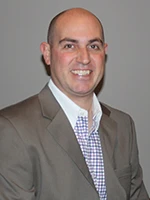
After dealing with winter, superintendent Brandon Schindele was glad to see green at the Edina Country Club in Edina, Minn. He was even more excited not to see snow mold problems, after last year’s combination of strong turf in fall and a solid prevention program.
It’s not that snow mold is not in the area. “As long as I’ve been a part of the spraying and treatment team, from my time as an intern, everyone in this area makes preventive applications,” Schindele says. “The area of treatment or the type of preventive program may vary, but we all do what our budgets can handle. If we have any areas missed, say at the edge of a fairway or where the operator shuts off the spray boom too soon, we will see snow mold.”
Last year Schindele used a combination of Triton, Interface and Civitas. The product cost for the whole course was about $15,000. “It is the most expensive treatment we do all year,” says Schindele. He varies his program from year to year and follows the data from the snow mold trials from both the Universities of Minnesota and Wisconsin. He also reads other reports, talks to company reps and other superintendents for their feedback.
“If a new product looks promising, I’ll try to use it on a nursery green or a portion of a fairway. I try it on limited spaces to see how it performs for me,” says Schindele. “I look for a big improvement or to see if it helps financially. If it helps my budget and gives comparable control, I’ll consider it.”
The timing of the application goes by the weather. “I try to do it as late as I can so the grass is not completely shut down. I want it down before dormancy so the systemic will go into the plant,” says Schindele. “I also don’t want it too warm so we’d have breakdown of the chemicals. I do try to wait until we close down the golf course. For a contact chemical, I don’t want the traffic on the grass blades.”
He did report that on the last green that was sprayed last year he made a second application. “I didn’t think the material had enough time to dry on the leaf blade before we had a rain on it. After talking with other superintendents and my university contacts, I felt the best insurance was to treat again,” says Schindele. That extra step could have been the deciding factor in his “no snow mold problems this spring” report.
Schindele does not provide a lot of specifics to the members. “They do know that we need to make annual applications and that those applications are a part of shutting down the course for the year and there is a budget for it. They hire the superintendent for a reason and put their trust in me to make the right decisions,” he says.
Latest from Golf Course Industry
- From the publisher’s pen: Conscientious of a bigger role
- Bernhard and Company partners with Laguna Golf Phuket
- Terre Blanche showcases environmental stewardship
- VIDEO: Introducing our December issue
- Bernhard and Company introduces Soil Scout
- Nu-Pipe donates to GCSAA Foundation’s Centennial Campaign
- GCSAA enhances golf course BMP tool
- Melrose leadership programs sending 18 to 2026 GCSAA Conference and Trade Show





